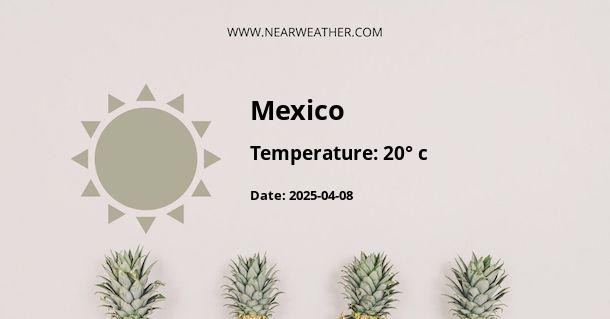Climate and Weather in Mexico
Mexico is known for its diverse climate due to its vast size and varying topography. The country experiences a wide range of weather patterns, from tropical to desert climates, making it a popular destination for tourists seeking different weather experiences. Understanding Mexico's climate and weather conditions is essential for planning any visit to this beautiful and diverse country.
Seasonal Weather Patterns
Like many other countries in the Northern Hemisphere, Mexico experiences four distinct seasons: winter, spring, summer, and fall. However, due to its diverse geography, the weather patterns can vary greatly from region to region.
The coastal areas of Mexico, including popular tourist destinations such as Cancun and Puerto Vallarta, experience a tropical climate with high temperatures and humidity throughout the year. In contrast, the central and northern regions of Mexico have a more temperate climate, with cooler temperatures during the winter months.
Temperature and Precipitation
The average temperatures in Mexico vary depending on the region and the time of year. In the coastal and low-lying areas, such as the Yucatan Peninsula, average temperatures range from 75°F to 85°F (24°C to 29°C) throughout the year. Inland areas, such as Mexico City, experience cooler temperatures, with averages ranging from 55°F to 75°F (13°C to 24°C).
When it comes to precipitation, the rainy season in Mexico typically occurs between May and October. During this time, the coastal areas and regions with a tropical climate experience frequent and heavy rainfall. In contrast, the northern and central regions of Mexico may experience less rainfall and even drought conditions in some areas, especially during the summer months.
Extreme Weather Events
Mexico is also susceptible to extreme weather events such as hurricanes, particularly in the coastal areas along the Gulf of Mexico and the Pacific Ocean. The hurricane season in Mexico runs from June to November, with the highest likelihood of hurricanes occurring between August and October. It's important for travelers to monitor weather forecasts and advisories during this time and take necessary precautions if visiting coastal areas.
Climate by Region
Here is a breakdown of the climate in some of the popular regions in Mexico:
Cancun
| Month | High (°F) | Low (°F) | Precipitation (in) |
|---|---|---|---|
| January | 82 | 70 | 2.2 |
| April | 85 | 73 | 1.5 |
| July | 88 | 75 | 5.7 |
| October | 86 | 74 | 5.9 |
Cancun, located in the Yucatan Peninsula, experiences a tropical climate with warm temperatures year-round and a distinct wet season from May to October.
Mexico City
| Month | High (°F) | Low (°F) | Precipitation (in) |
|---|---|---|---|
| January | 68 | 42 | 0.5 |
| April | 73 | 47 | 0.7 |
| July | 72 | 50 | 5.0 |
| October | 70 | 48 | 2.6 |
Mexico City, located in the central highland plateau, has a subtropical highland climate with mild, dry winters and warm, wet summers. The city experiences the most rainfall from May to October.
Conclusion
In conclusion, Mexico offers a diverse range of climates and weather conditions throughout the year. Whether you prefer the tropical heat of the coast or the temperate climate of the central highlands, Mexico has something to offer for every type of traveler. By understanding the seasonal weather patterns, temperature ranges, and precipitation levels, visitors can better prepare for an enjoyable and comfortable stay in this beautiful country.
A - Mexico's Latitude is 23.000000 & Longitude is -102.000000.
A - Weather in Mexico is 22° today.
A - Climate Conditions in Mexico shows broken clouds today.
A - Humidity in Mexico is 18% today.
A - Wind speed in Mexico is 38.41 km/h, flowing at 251° wind direction. today.
